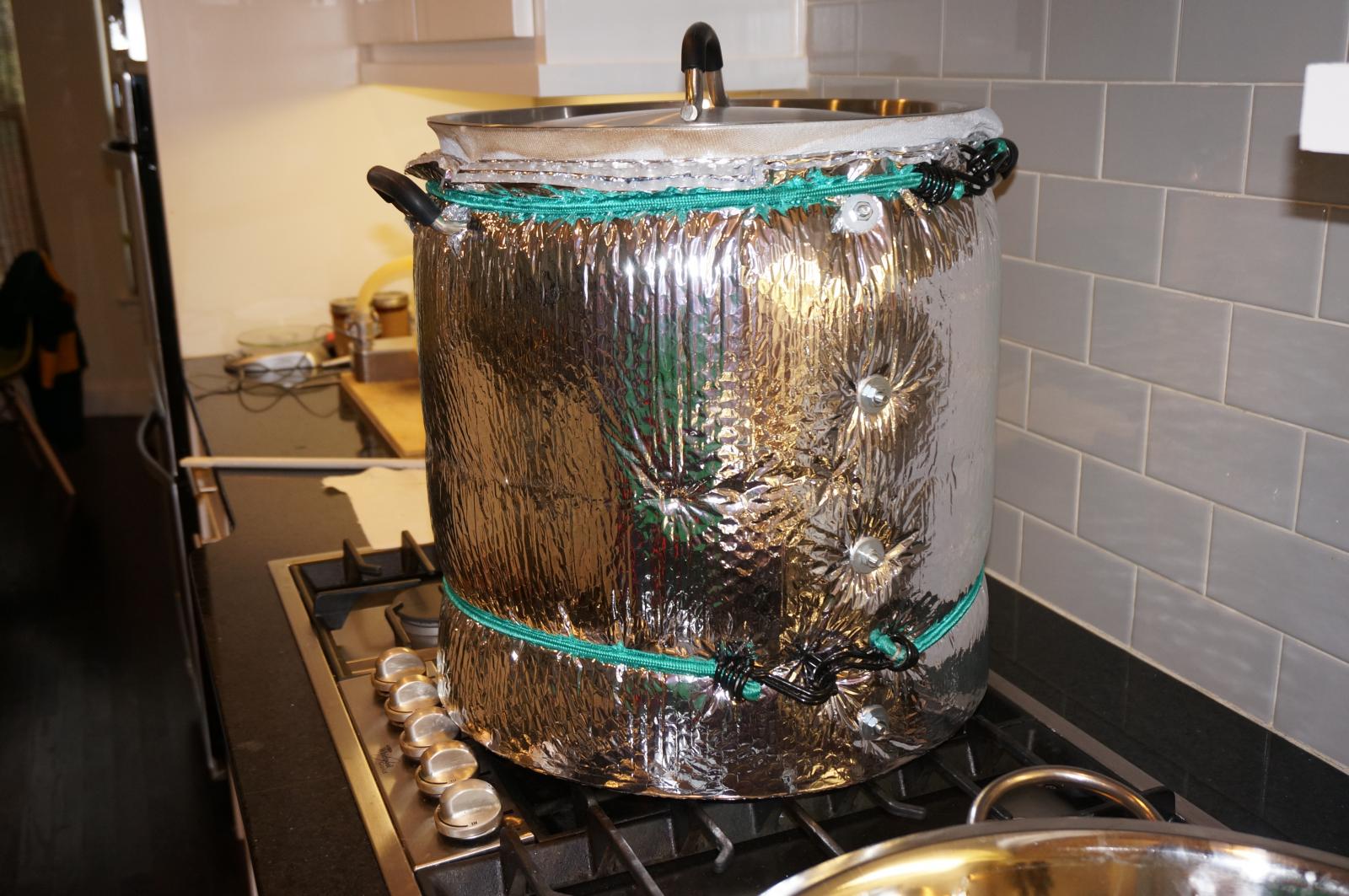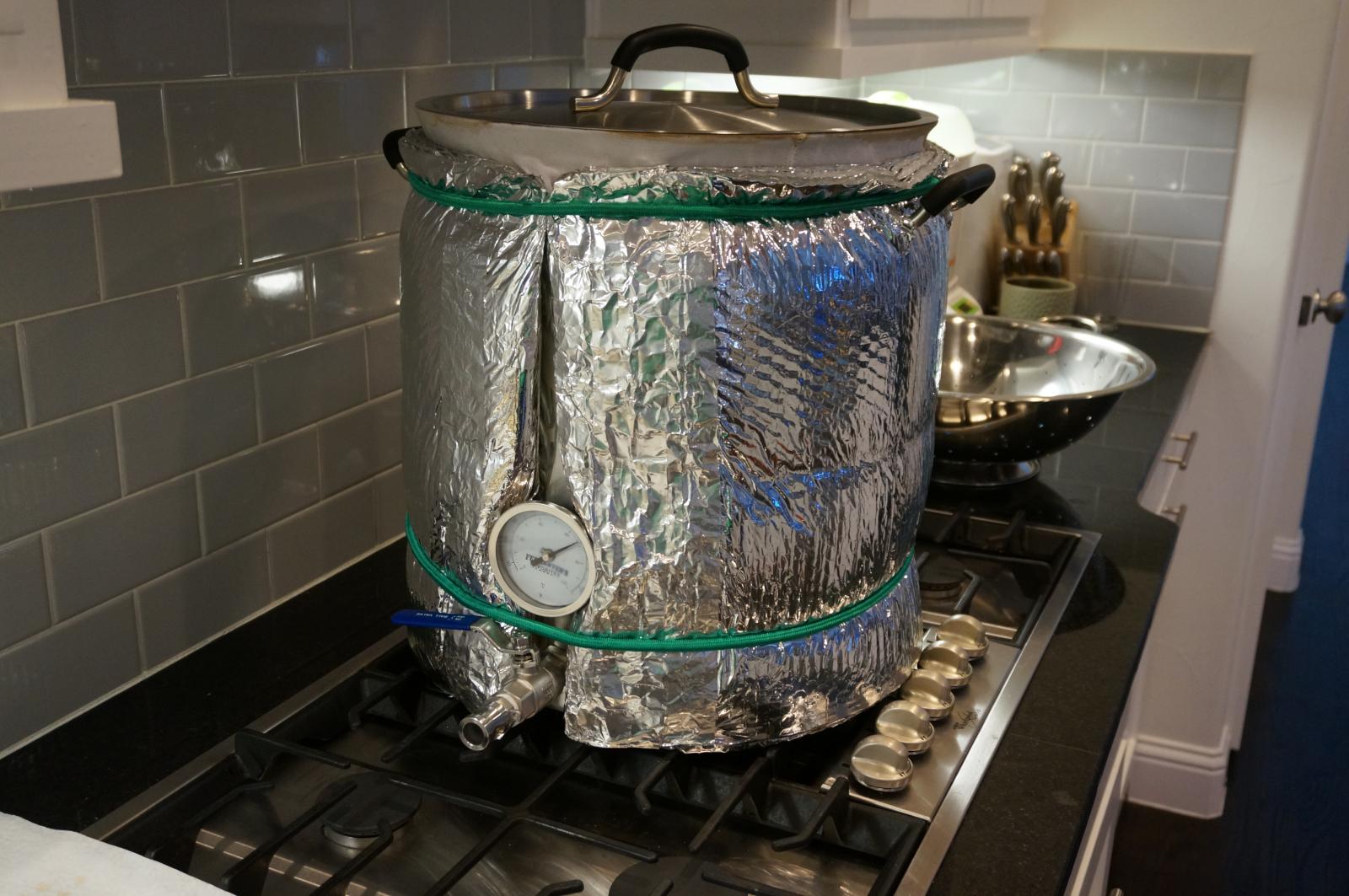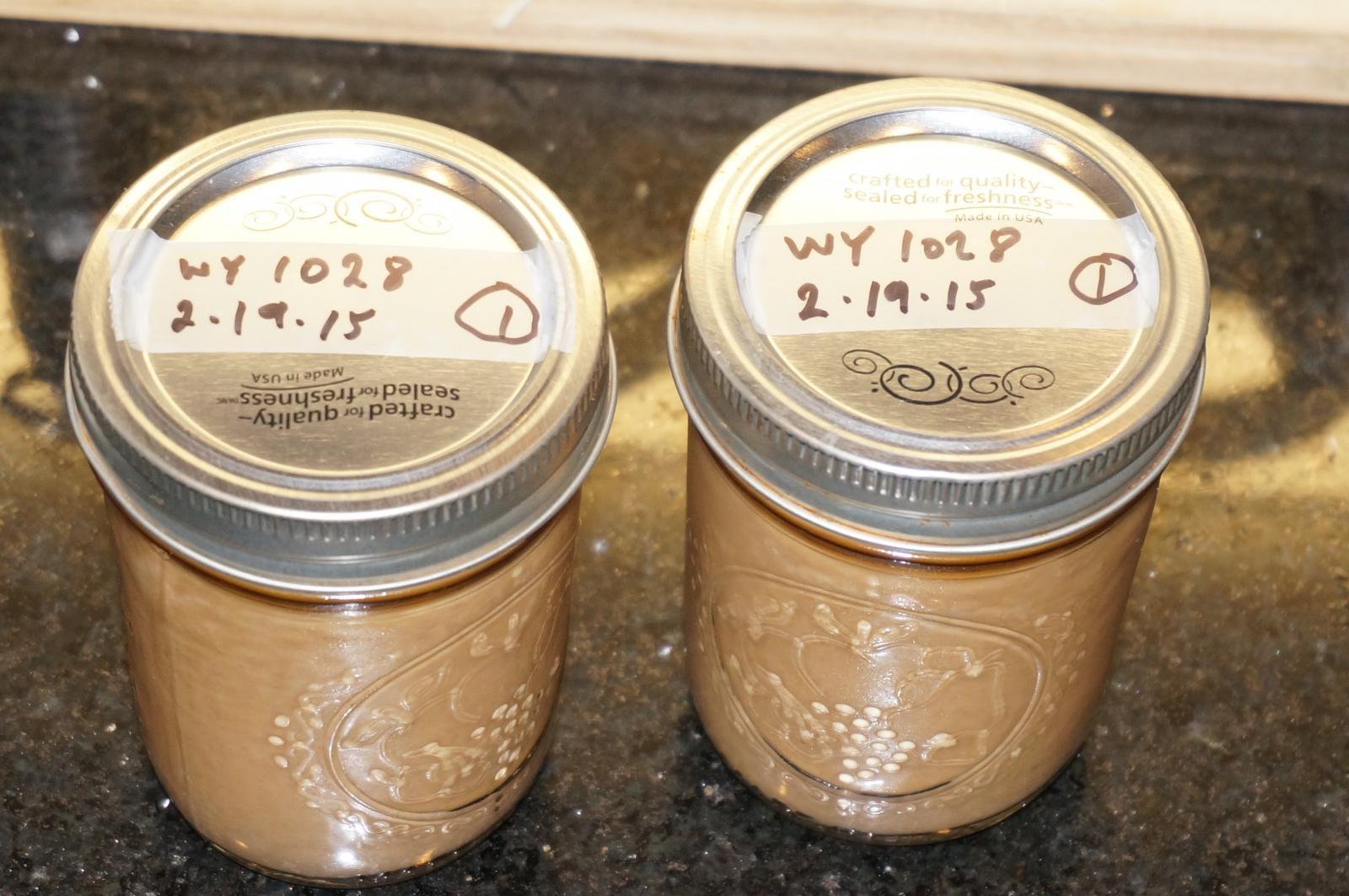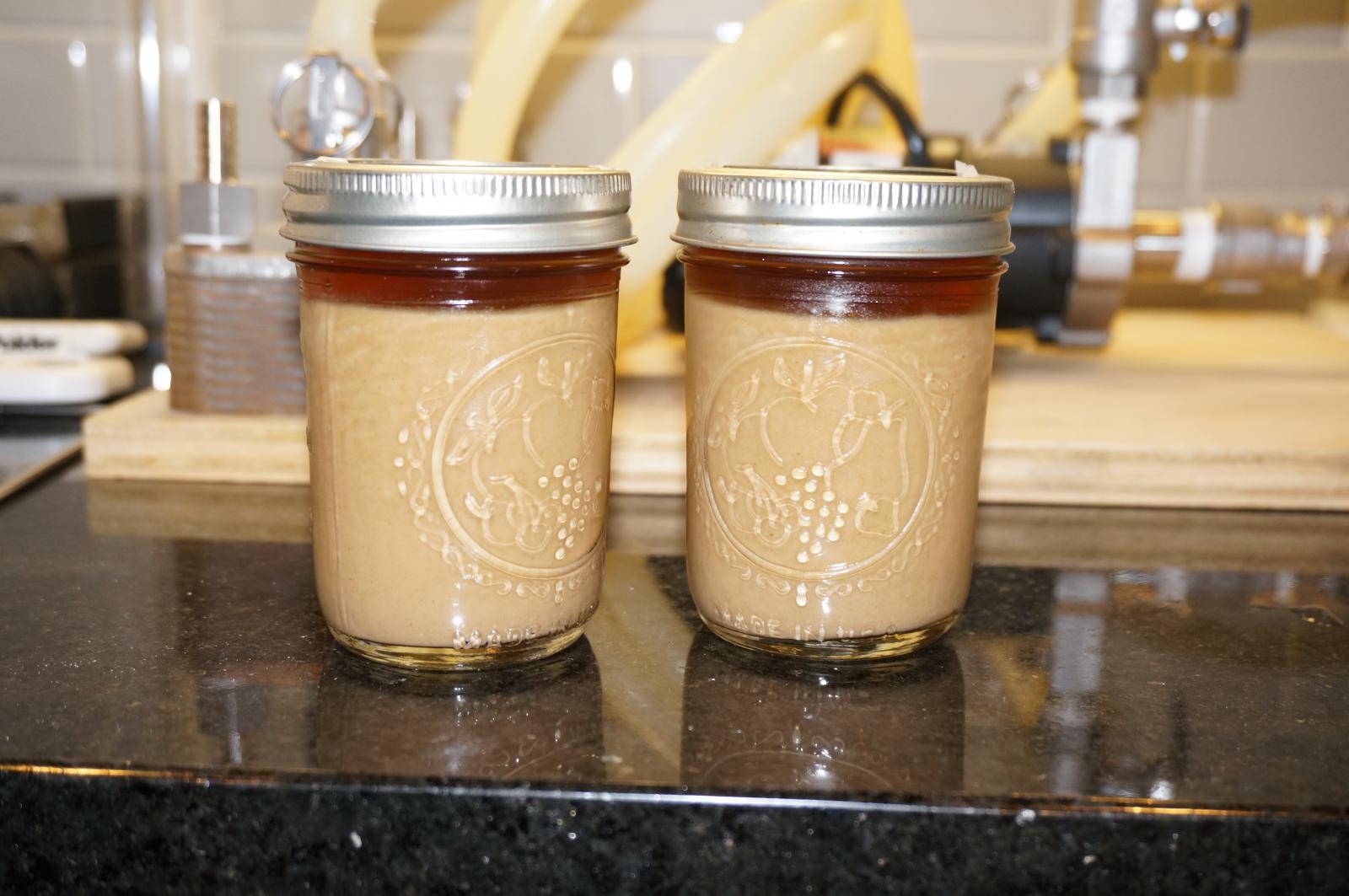With my latest brew yeaterday (Yooper's Oatmeal stout) I decided to try a couple of things I had not previously done.
1: I used Bru'n water to calculate water adjustments on foot of a Ward Labs report I recently got
2: CaCO3 was added to raise the Ca (this was a bad idea as I have since discovered)
3: Lactic acid was added to the mash to lower the pH (I do not have a pH meter yet so was a bit scared to take this blind and probably ill-advised approach. Amount based on Bru'n water calcs)
4: I used reflectix to insulate the mash and intermittently stirred (3 times) during the 60 minute mash at my target of 155F
The result was a mash efficiency of a hair over 90%. Fortunately my ensuing BH eficiency and FG is still well within the style guidelines (1.056) and should still result in a beer reasonably close to the author's intent.
The Reflectix was very effective at keeping heat in the mash even with stirring no temperature drop was noted. I used my ugly orange jacket to insulate the lid as I haven't got round to adding the Reflectix yet


1: I used Bru'n water to calculate water adjustments on foot of a Ward Labs report I recently got
2: CaCO3 was added to raise the Ca (this was a bad idea as I have since discovered)
3: Lactic acid was added to the mash to lower the pH (I do not have a pH meter yet so was a bit scared to take this blind and probably ill-advised approach. Amount based on Bru'n water calcs)
4: I used reflectix to insulate the mash and intermittently stirred (3 times) during the 60 minute mash at my target of 155F
The result was a mash efficiency of a hair over 90%. Fortunately my ensuing BH eficiency and FG is still well within the style guidelines (1.056) and should still result in a beer reasonably close to the author's intent.
The Reflectix was very effective at keeping heat in the mash even with stirring no temperature drop was noted. I used my ugly orange jacket to insulate the lid as I haven't got round to adding the Reflectix yet





















































![Craft A Brew - Safale BE-256 Yeast - Fermentis - Belgian Ale Dry Yeast - For Belgian & Strong Ales - Ingredients for Home Brewing - Beer Making Supplies - [3 Pack]](https://m.media-amazon.com/images/I/51bcKEwQmWL._SL500_.jpg)



























